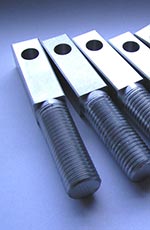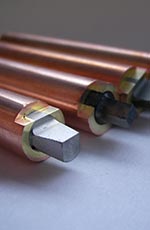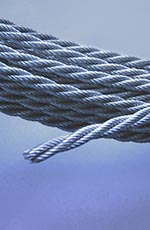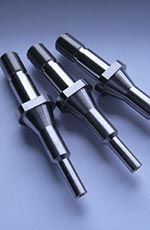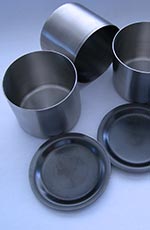Tungsten High Density Alloy (WSM)
Tungsten High Density Alloy (WSM) is a composite material with a very high percentage of Tungsten. Nickel-Iron is used as a composite metal, respectively for paramagnetic applications Nickel-Copper is used instead. WSM is produced by mixing, pressing and sintering of the corresponding metal powder portions. Tungsten High Density Alloy and pure Tungsten have a lot of characteristics in common as for example the very high density or the very good shielding against X-ray radiation, however the machinability of WSM is much easier. WSM is both at processing and application, neither polluting nor harmful.Significant Characteristics and Applications:
- good machinability
- very high density
- very good dimensional stability
- very good mechanical properties
- high surface quality
- high shielding against X-ray and Gamma radiation
Important WSM-Types:
- WSM W90NiFe & WSM W90NiCu - approx. 17 g/ccm (Class1)
- WSM W92.5NiFe & WSM W92.5NiCu - approx. 17.5 g/ccm (Class2)
- WSM W95NiFe & WSM W95NiCu - approx. 18 g/ccm (Class3)
- WSM W97NiFe - approx. 18.5 g/ccm (Class4)
Typical Applications of Tungsten High Density Alloy (WSM):
Shielding against X-ray and Gamma-radiation, balance and counterbalance weights (replacement of lead), ballistic projectiles, Aluminum and Magnesium pressure die-casting moulds, mould inserts and ejectors, extrusion pressing inserts, electrical contacts, resistance welding electrodes, tool holders, drilling rods and others.
ASTM Standard Specifications:
ASTM B777 (Tungsten Base, High Density Metal)
AMS 7725E (AMS T-21014A)
MIL-T-21014D
Range of Products:
Rods, squares, plates, counterbalance weights, shielding and finished parts according to drawings.



